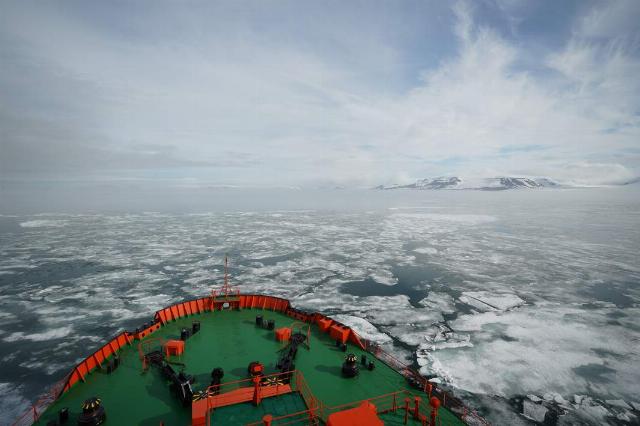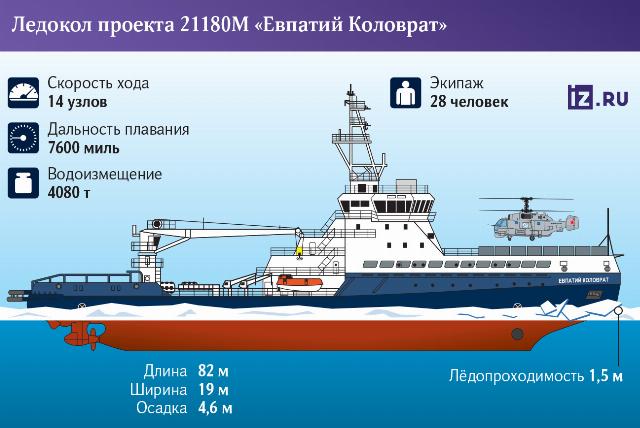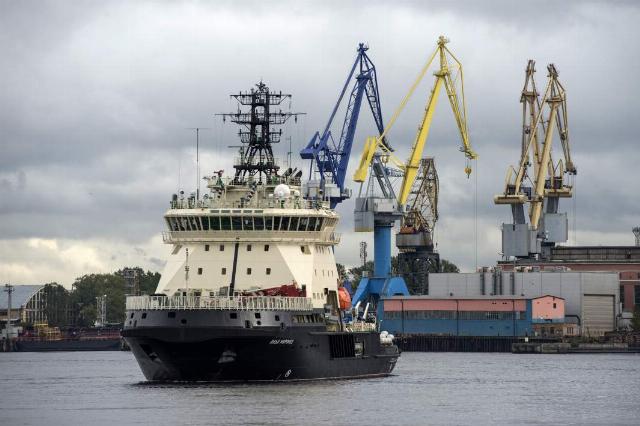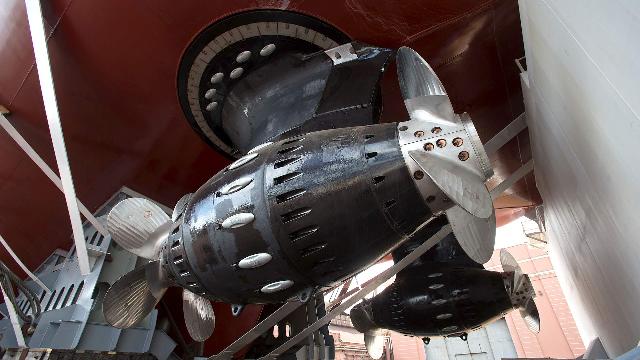The new ship will join the Pacific Fleet by the end of July
In July, the icebreaker Yevpatiy Kolovrat of the 21180M project will join the Navy. In the near future, the flag of the auxiliary fleet should be raised on it. The ship has already completed all necessary tests and will serve in the Pacific Fleet. According to experts, icebreakers of this class are necessary for Russia to monitor and control the Northern Sea Route, as well as to deploy forces in Kamchatka.
To protect the Northern Sea Route
The icebreaker Yevpatiy Kolovrat of the 21180M project will become part of the Navy by the end of July, sources told Izvestia in the military department. According to the interlocutors, the acceptance certificate was signed in the second half of June. This was preceded by the successful completion of mooring, factory running and state tests.
By the end of this month, the flag of the auxiliary fleet will be raised on the ship, and by order of the Commander-in-Chief of the Navy, it will be included in the Pacific Fleet.
The Kolovrat was built by the Almaz shipbuilding company in St. Petersburg. The laying took place in December 2018, and the launch was made in 2020. Last year, the icebreaker made an inter-fleet crossing to Kamchatka.

Photo: IZVESTIA/Pavel Volkov
Image source: iz.ru
In February of this year, the Ministry of Defense reported that the Yevpatiy Kolovrat would be transferred to the fleet within six months.
— It is planned that the icebreaker will serve in the Pacific Fleet, performing the tasks of ice escort of warships and naval support vessels in the Arctic zone. The presence of a modern icebreaker in the Pacific Fleet forces will increase the capabilities of warship detachments during the performance of tasks in areas with difficult ice conditions, the department noted.
The construction of icebreakers is connected with the fact that Russia must ensure its sovereignty over the Northern Sea Route, Admiral Sergei Avakyants, ex-commander of the Pacific Fleet, told Izvestia.
— Icebreakers will allow patrolling and protection at certain stages of this communication, — he explained to Izvestia. — And for the Pacific Fleet, this is also relevant because the Bering Sea and, most importantly, the Sea of Okhotsk are located in the operational zone. And there, icebreaking wiring is needed to deploy forces at certain stages. The class of these icebreakers should be high enough. They must carry out tasks to monitor the surface situation, control the Northern Sea Route and guard at certain boundaries of this communication.

Kamchatka is a strategic defense hub in the northeast of the country, with which only aviation and naval supplies exist, military historian Dmitry Boltenkov told Izvestia.
— Avacha Bay usually freezes in winter. And in order for warships to go to sea, the ice must be broken," he explained. — Icebreakers served there, but they were built very long ago. Therefore, a few years ago, the Ministry of Defense ordered two icebreakers — one for the Northern Fleet and one for Kamchatka — so that, if necessary, it would be possible to break the ice and provide ships with access from the Avacha Bay to the open part of the Pacific Ocean. In addition, such an icebreaker will be needed to perform tasks in the eastern part of the Northern Sea Route. He will be able to operate in those open spaces.
Icebreakers for the Navy
The Yevpatiy Kolovrat became the second ship of the 21180/21180M project. The main one, Ilya Muromets, serves in the Northern Fleet. It was laid down in 2015, transferred to the Navy in 2017 and became the first icebreaker built for the needs of the Navy in 45 years. The Kolovrat was built according to the modernized 21180M project. In particular, the developers have reduced the dimensions and draft. The displacement of the ship is 4000 tons, the draft is 4.6 m against 6.8 m for the Ilya Muromets. According to the developer, the reduced draft will allow the ship to enter the ports of Tiksi in Yakutia and Dixon in the Krasnoyarsk Territory, which are operated by the Russian Navy. And one of the main tasks of military icebreakers is to ensure the basing and deployment of fleet forces in the Arctic, including ice wiring of warships and auxiliary vessels.

Diesel-electric icebreaker project 21180 Ilya Muromets
Image source: Photo: RIA Novosti/Alexander Galperin
The new icebreaker can reach speeds of up to 15 knots and overcome ice up to one and a half meters thick. Crew — 28 people, length — 82 m, width — 19 m. The main technical innovation is the rotorcraft columns, which can rotate 360 degrees around a vertical axis, which will allow the icebreaker to move not only bow, but also stern and side.
The icebreaker can conduct ships and vessels in a solid ice field, transport cargo in the hold and containers on deck, perform hydrographic surveys, and participate in rescue operations. In addition, it can be used to extinguish fires at emergency facilities, eliminate emergency oil spills, as well as to transport passengers or troops. The icebreaker is equipped with a crane with a lifting capacity of 26 tons, and a helipad is located in the bow of the vessel.
In addition to the ships of the 21180/21180M project, a line of icebreaker class patrol ships of the 23550 project is being built for the Navy. The lead ship, Ivan Papanin, is to be transferred to the fleet this year, and the crew settled on it in the spring. The ships of project 23550 are designed for conducting ships in ice, towing, monitoring Arctic waters, escorting support vessels and escorting detained ships and vessels. The icebreaker has an AK-176MA artillery installation in its arsenal, and it can also carry Kalibr cruise missiles. If necessary, a multi-purpose helicopter can be based on its board. The team is armed with portable anti-aircraft missile systems. It reaches speeds of up to 18 knots and can overcome ice fields up to 1.7 m thick. The ship's autonomy is 70 days, and the range is 10 thousand nautical miles. Izvestia reported that after completion, Ivan Papanin will replenish the 14th brigade of anti-submarine ships of the Kola Flotilla of the Northern Fleet. It is planned that it will ensure the operation of warships in the most difficult weather conditions. This is due to the decision of the military department to ensure the year-round presence of Navy ships in the Arctic, in the waters of the Northern Sea Route.
Roman Kretsul
Vladimir Matveev

